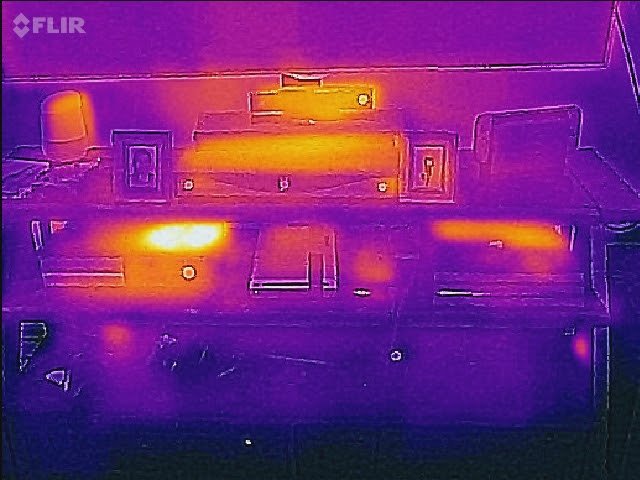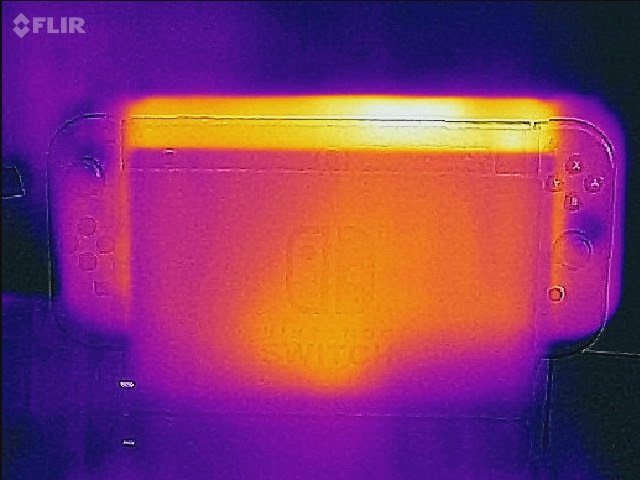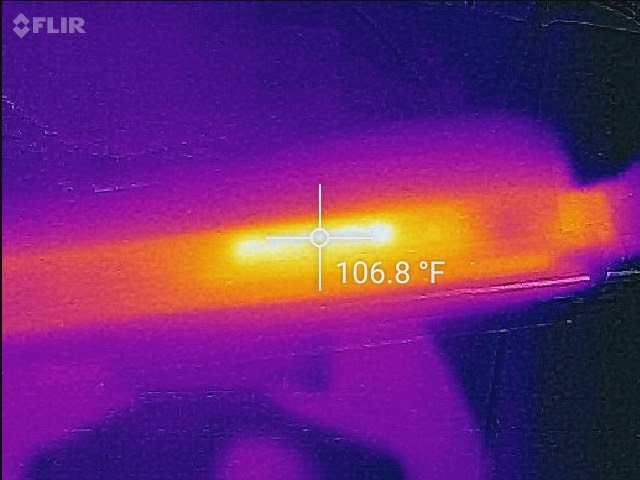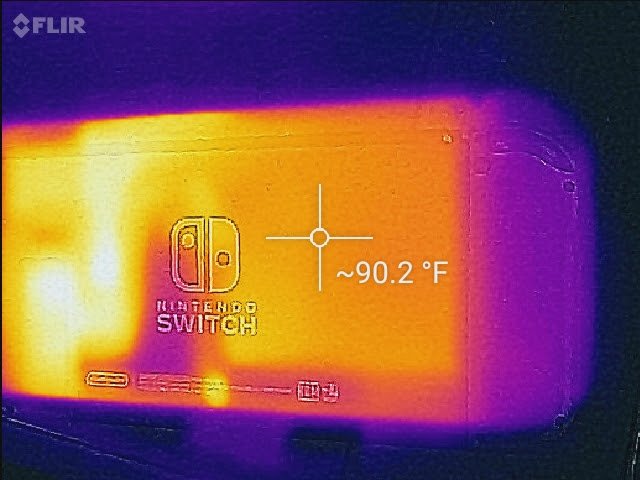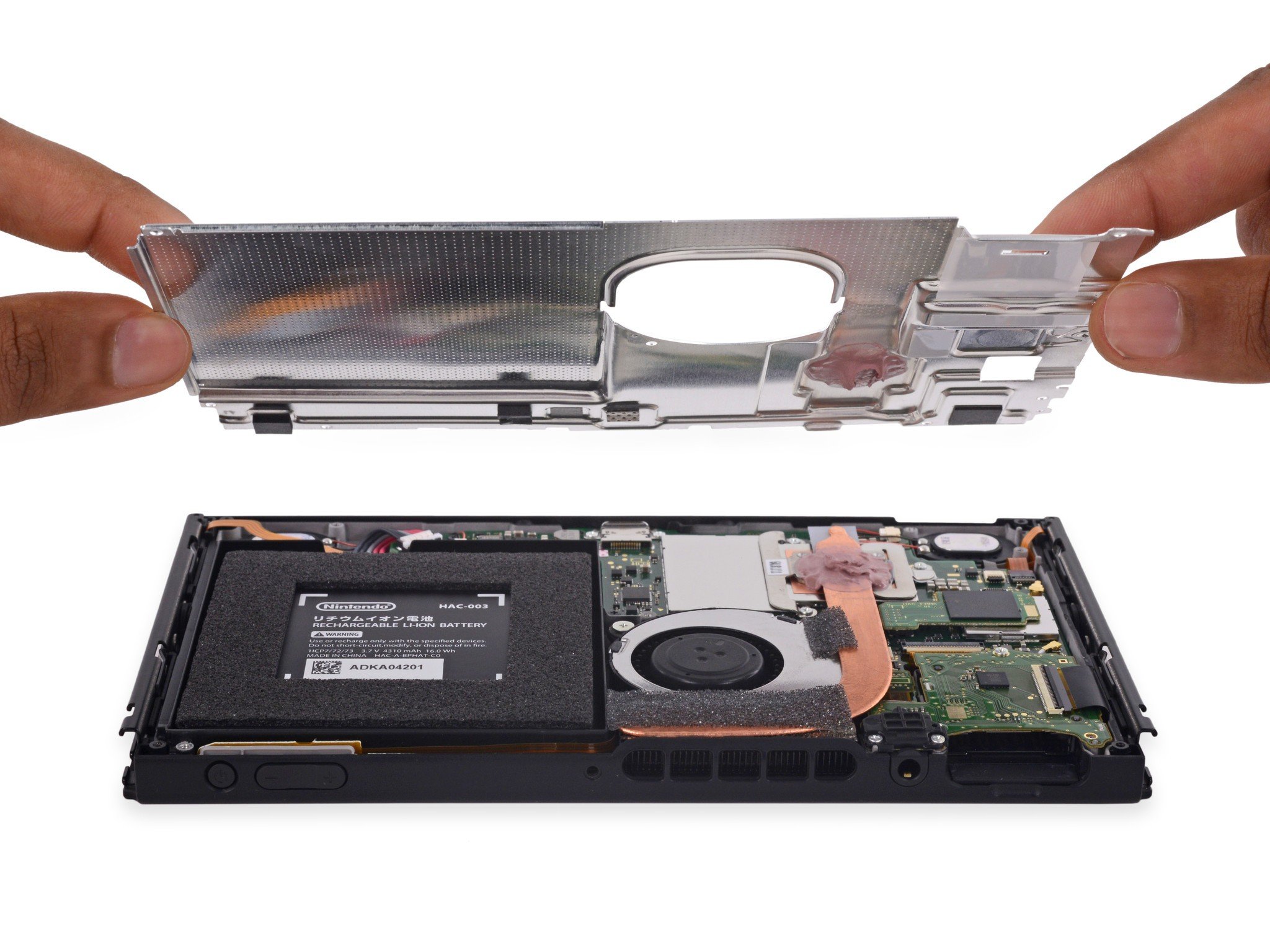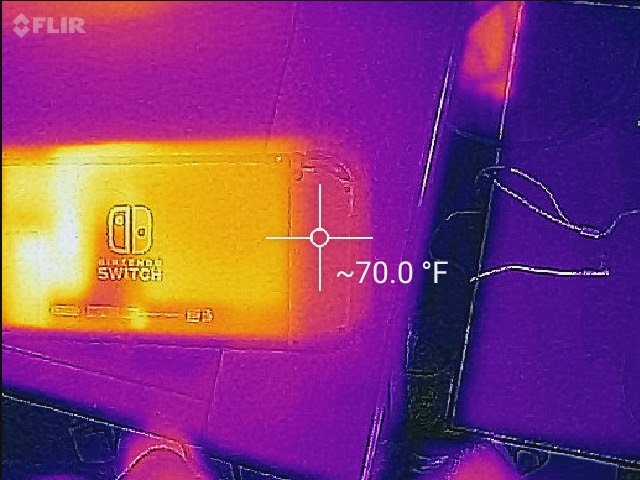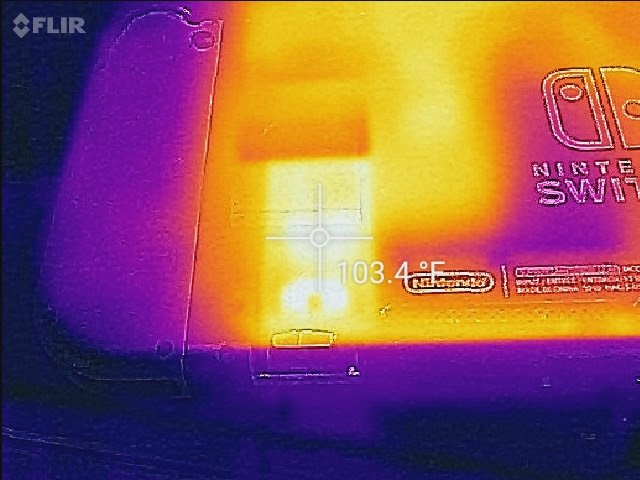Is your Nintendo Switch running hot while in the dock?
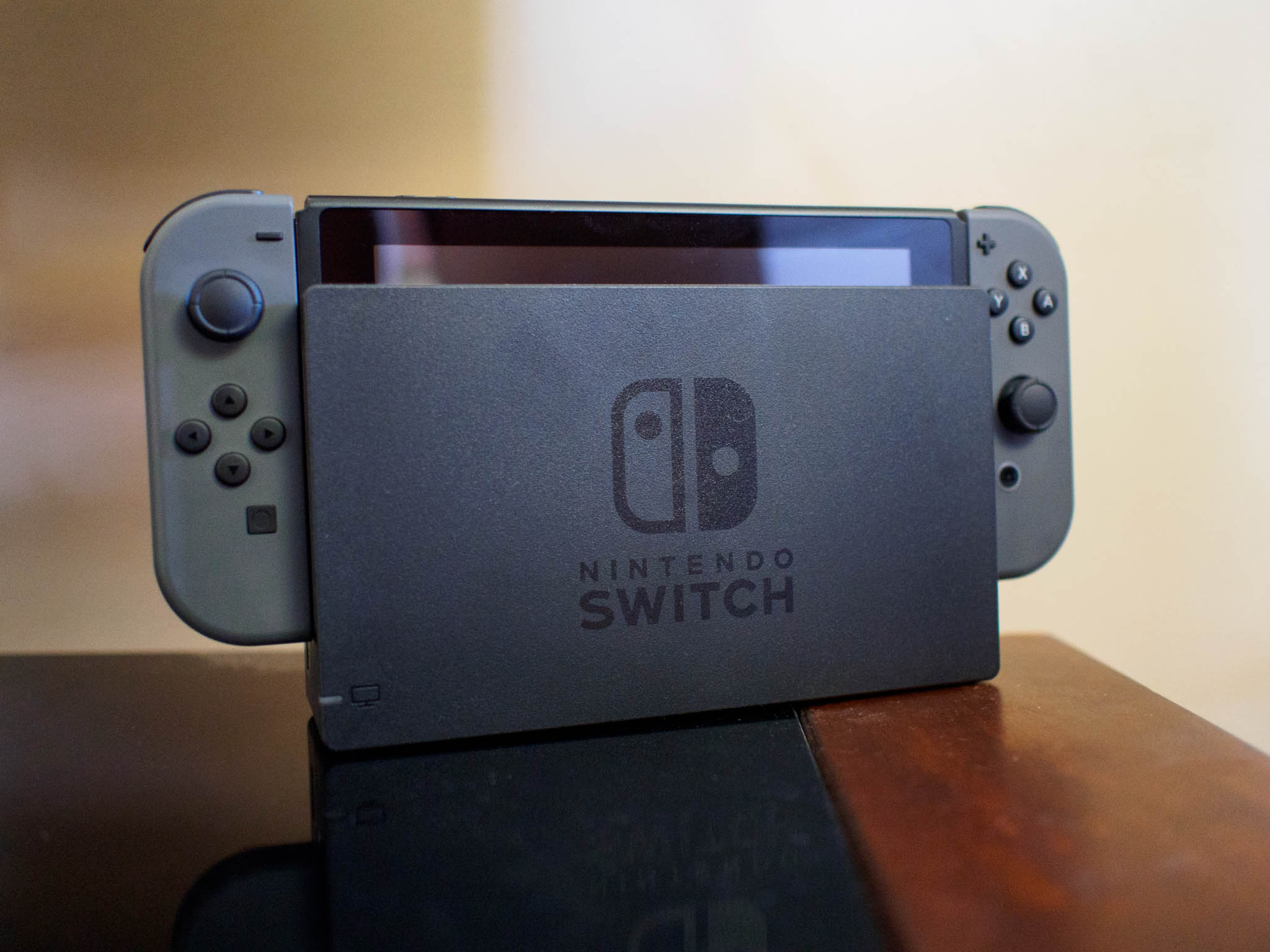
If you've been playing a lot of Legend of Zelda: Breath of the Wild recently, you've probably noticed it's a game that puts a fair bit of stress on the Nintendo Switch. For any mobile device, heavy gaming means lots of heat. When that mobile device is wedged into a big plastic dock so you can enjoy the game on your television, you're adding power and insulation to something already generating heat.
It's not hard to look at that situation and wonder if overheating or battery damage due to heat are concerns. While Nintendo says there's nothing to worry about, we took a loot at the Switch through a thermal camera in various states to see just how much heat is being generated and where.
The first set of shots here are from my entertainment center, when everything on it is on but has been idle for at least 30 minutes. What you're seeing here, from top left to bottom right, is a Google Home, TiVo Premiere, Xbox One Kinect, Nintendo Switch, Xbox One, Nintendo Wii, PlayStation VR sync box, and the PlayStation 4 Pro. From this shot you can see that, when idle, the Nintendo Switch in the top right is generating very little heat compared to most everything else here.
The Xbox One appears to generate the most heat, because its primary thermal exhaust is at the top of the console. If I had shot the PS4 Pro from the back, the thermal reading would be very similar to the Xbox One. These are built to constantly output at a certain threshold, where the Nintendo Switch is all about running as cool and quiet as possible. It's also running a processor designed for tablets, instead of a desktop computer processor, so there's an expectation that it will run considerably cooler.
Here's what the Switch looks like after 45 minutes of Breath of the Wild, which is the hardest you can push the Switch hardware right now. As you can see, it got considerably warmer. There's a clear thermal line where the heat is being pushed out through the vent at the top of the console, which is exactly what the console has been designed to do. If we take a look directly down that vent with the thermal camera, we see the console is pushing nearly 107-degree air out of that vent with the tiny fan at the base of the tablet.
Does 107 sound like a lot? Absolutely. If all of the air around you was 107, you'd be very uncomfortable. If your body was 107, you'd be in quite a bit of trouble medically. For a tablet, however, 107 is perfectly fine. Most smartphones under heavy load, like an intense game, can and do heat up to between 108 degrees and 120 degrees on a regular basis. Those machines are fully enclosed and made of metal and glass, where the Switch is pushing that heat out and is made largely of plastic on the outside. Not only is the Switch running cooler under load, the heat is being evacuated instead of contained right next to the battery.
On the subject of batteries, it's important to take a look at why Nintendo's heat system works the way it does for the Switch. When we removed the tablet from its dock while it was working so hard, the thermal camera revealed a large heat pipe keeping a significant amount of heat away from one half of the Switch. Thanks to a teardown from the wonderful folks at iFixit, we know that's where the battery is located inside the console.
iMore offers spot-on advice and guidance from our team of experts, with decades of Apple device experience to lean on. Learn more with iMore!
Heat isn't great for batteries, especially over time, and Nintendo seems to have worked overtime to ensure the Switch keeps as much heat as possible away from the battery. This design suggests the battery in your Switch will remain well cared for even after hours of intense gameplay while connected to your dock, and that's very important. The only way heat could become a problem for this console would be if the top vent were somehow covered and the Switch couldn't push heat out like it is designed to.
What happens if you want to pull the Switch out of its dock after an intense gaming session on your television? Basically, there's nothing to worry about. Even with the Joy-Cons connected to the console the whole time we played Breath of the Wild on the television, each side remained at very cool temperatures. The rail design for these controllers keeps the leftover heat from moving over much, so it's unlikely you'd even notice the controllers were a little warm.
If your hands rest on the back of the console while playing the Switch with Joy-Cons, you may notice a little heat with your right fingertips. The hottest part of the exterior to this console is right under the kickstand, since that's where the material is thinnest. With the kickstand closed this part of the console feels similar to the rest of the backing, but it is slightly warmer to the touch. Even when the Switch is pushing out that 107-degree air, the back of the console never feels more than slightly warmer than usual when you hold it.
So there you have it, not much to worry about. It's probably a good idea to avoid removing the Switch from its dock by grabbing near the vent after a lot of gameplay, but even then it's never enough heat to cause more than slight discomfort. This system does exactly what it was designed to do with heat, and it does those things quite well.
Russell is a Contributing Editor at iMore. He's a passionate futurist whose trusty iPad mini is never far from reach. You can usually find him chasing the next tech trend, much to the pain of his wallet. Reach out on Twitter!
